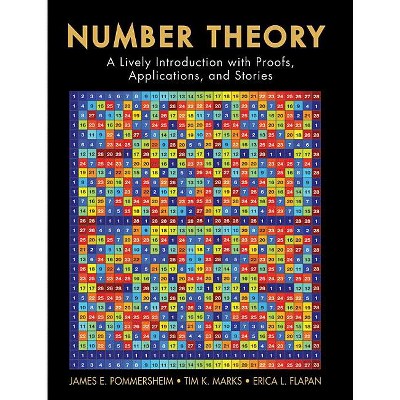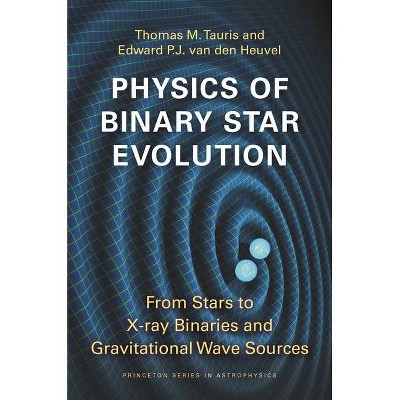Sponsored

What Does a Black Hole Look Like? - (Princeton Frontiers in Physics) by Charles D Bailyn (Hardcover)
In Stock
Sponsored
About this item
Highlights
- A sophisticated introduction to how astronomers identify, observe, and understand black holes Emitting no radiation or any other kind of information, black holes mark the edge of the universe--both physically and in our scientific understanding.
- About the Author: Charles D. Bailyn is the A. Bartlett Giamatti Professor of Astronomy and Physics at Yale University.
- 224 Pages
- Science, Physics
- Series Name: Princeton Frontiers in Physics
Description
About the Book
"Emitting no radiation or any other kind of information, black holes mark the edge of the universe--both physically and in our scientific understanding. Yet astronomers have found clear evidence for the existence of black holes, employing the same tools and techniques used to explore other celestial objects. In this sophisticated introduction, leading astronomer Charles Bailyn goes behind the theory and physics of black holes to describe how astronomers are observing these enigmatic objects and developing a remarkably detailed picture of what they look like and how they interact with their surroundings. Accessible to undergraduates and others with some knowledge of introductory college-level physics, this book presents the techniques used to identify and measure the mass and spin of celestial black holes. These key measurements demonstrate the existence of two kinds of black holes, those with masses a few times that of a typical star, and those with masses comparable to whole galaxies--supermassive black holes. The book provides a detailed account of the nature, formation, and growth of both kinds of black holes. The book also describes the possibility of observing theoretically predicted phenomena such as gravitational waves, wormholes, and Hawking radiation. A cutting-edge introduction to a subject that was once on the border between physics and science fiction, this book shows how black holes are becoming routine objects of empirical scientific study."--Book Synopsis
A sophisticated introduction to how astronomers identify, observe, and understand black holes
Emitting no radiation or any other kind of information, black holes mark the edge of the universe--both physically and in our scientific understanding. Yet astronomers have found clear evidence for the existence of black holes, employing the same tools and techniques used to explore other celestial objects. In this sophisticated introduction, leading astronomer Charles Bailyn goes behind the theory and physics of black holes to describe how astronomers are observing these enigmatic objects and developing a remarkably detailed picture of what they look like and how they interact with their surroundings. Accessible to undergraduates and others with some knowledge of introductory college-level physics, this book presents the techniques used to identify and measure the mass and spin of celestial black holes. These key measurements demonstrate the existence of two kinds of black holes, those with masses a few times that of a typical star, and those with masses comparable to whole galaxies--supermassive black holes. The book provides a detailed account of the nature, formation, and growth of both kinds of black holes. The book also describes the possibility of observing theoretically predicted phenomena such as gravitational waves, wormholes, and Hawking radiation. A cutting-edge introduction to a subject that was once on the border between physics and science fiction, this book shows how black holes are becoming routine objects of empirical scientific study.From the Back Cover
"This book goes straight to the heart of astronomical intuition and evidence about black holes. Written in a highly accessible style, it provides enough information to educate an undergraduate astronomy or physics major without going into the many details required in a graduate class. I think students will greatly enjoy this book and derive significant insight from it."--Coleman Miller, University of Maryland, College Park
"Providing the essential information on all the key topics, this concise and authoritative book covers the whole field of empirical black-hole studies."--W. Niel Brandt, Pennsylvania State University
Review Quotes
"Providing the essential information on all the key topics, this concise and authoritative book covers the whole field of empirical black-hole studies."--W. Niel Brandt, Pennsylvania State University
"This book goes straight to the heart of astronomical intuition and evidence about black holes. Written in a highly accessible style, it provides enough information to educate an undergraduate astronomy or physics major without going into the many details required in a graduate class. I think students will greatly enjoy this book and derive significant insight from it."--Coleman Miller, University of Maryland, College Park
About the Author
Charles D. Bailyn is the A. Bartlett Giamatti Professor of Astronomy and Physics at Yale University. He is currently serving as dean of faculty at Yale-NUS College in Singapore. He was awarded the 2009 Bruno Rossi Prize from the American Astronomical Society for his work on measuring the masses of black holes.Shipping details
Return details
Trending Non-Fiction

















